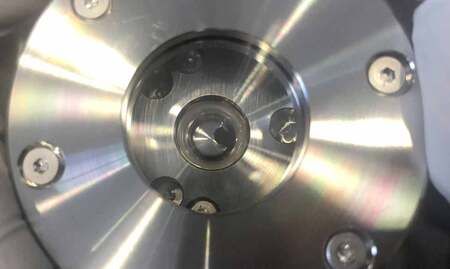
Tokyo, Sept. 11 (Jiji Press) — A groundbreaking discovery by a research team from the University of Tokyo has revealed that the parent celestial body of asteroid Ryugu retained abundant water for more than a billion years after its formation. This significant finding was published in the prestigious British science journal Nature on Thursday, based on the analysis of sand samples from Ryugu, brought back to Earth by Japan’s Hayabusa2 asteroid probe in 2020.
Ryugu’s parent body, estimated to have formed approximately 4.6 billion years ago in the outer reaches of the solar system, initially contained both carbon and water. Previous studies indicated that some of this water was absorbed into minerals, forming hydrous minerals during the early stages of the celestial body’s life. However, much of the remaining water was believed to have evaporated over time.
Unveiling the Mysteries of Ryugu
Currently, Ryugu itself, which was formed through the accumulation of fragments following a collision between its parent body and another celestial entity, contains almost no liquid water. This has made the recent findings even more intriguing to scientists.
Tsuyoshi Iizuka, an associate professor at the University of Tokyo, led the research team in an effort to determine the age of the sand collected from Ryugu. Using radioactive isotopes, the team discovered that the sand was formed about 4.8 billion years ago, suggesting it predates the solar system itself—a result that defies current scientific understanding.
The Implications of the Findings
The discovery that Ryugu’s parent body retained water for such an extended period provides new insights into the history and evolution of celestial bodies in the solar system. It challenges existing theories about the processes that govern the retention and loss of water in space.
“The presence of water in Ryugu’s parent body for over a billion years suggests that similar processes could have occurred in other celestial bodies, potentially affecting the development of life-supporting conditions,” said Iizuka.
This revelation opens up new avenues for research into the solar system’s history and the potential for life on other planets. The study’s findings may also have implications for understanding how water and other essential compounds are distributed across the cosmos.
Historical Context and Future Research
The Hayabusa2 mission, launched by the Japan Aerospace Exploration Agency (JAXA), has been instrumental in advancing our understanding of asteroids and their compositions. The mission’s success in returning samples from Ryugu has provided scientists with invaluable data that could reshape our knowledge of the early solar system.
Historically, missions like Hayabusa2 have offered glimpses into the past, allowing researchers to piece together the complex puzzle of our cosmic origins. The latest findings from Ryugu add a new dimension to this ongoing exploration.
Moving forward, scientists plan to conduct further analyses of the samples returned by Hayabusa2, aiming to uncover more details about the chemical and physical properties of Ryugu’s parent body. These efforts could potentially lead to breakthroughs in our understanding of planetary formation and the conditions necessary for life.
The discovery that Ryugu’s parent body retained water for such an extended period underscores the importance of continued space exploration and research. As scientists delve deeper into the mysteries of our universe, each new finding brings us closer to understanding the origins and evolution of the solar system.





